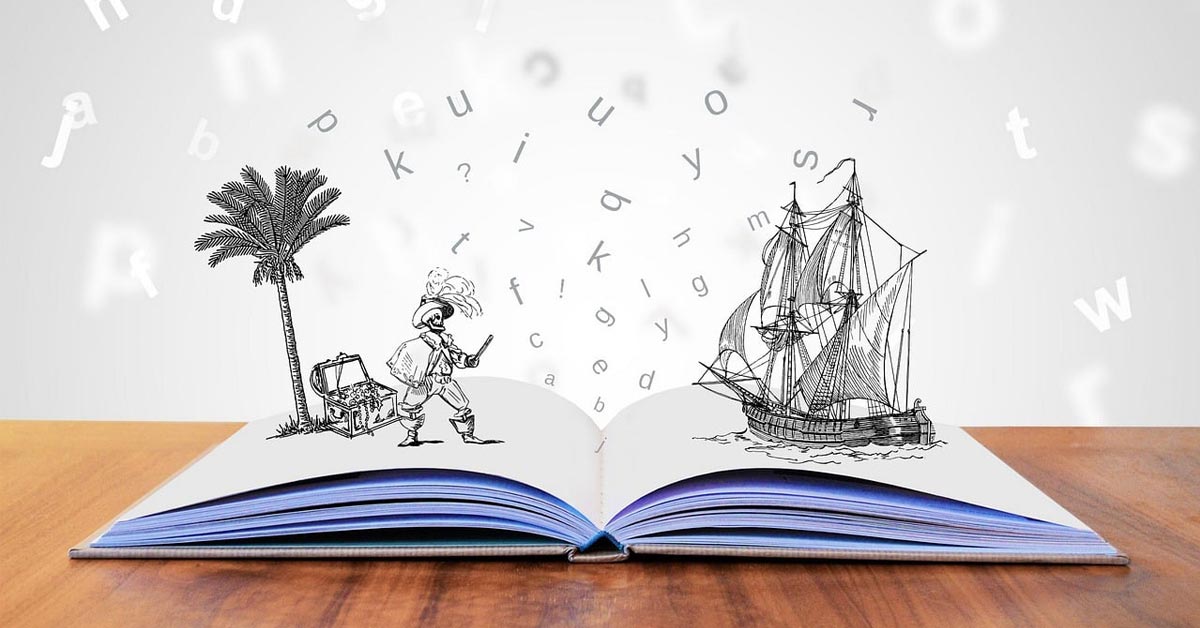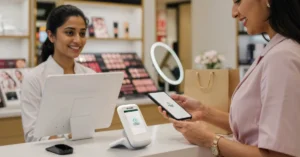Storytelling has long been an effective marketing tactic. A great story can inspire customers to use your product or service by taking them on an emotional journey and ultimately winning over their hearts.
But just how do you build a great brand story? As with any story, it’s about finding the right tale and knowing how to tell it. This guide to brand storytelling explains more about how to build a successful brand story.
Types of brand stories
It’s important that your product or service plays a pivotal part in your story. For this reason, there are only really a few angles you can take when telling a brand story. However, there are limitless ways in which you can approach these angles. Below are just some of the common story angles that have worked for companies over the years.
JOIN US TO STAY UPDATED ON YOUR FAVORITE MESSENGER APP!
1. The origin story
This may be the most common form of a brand story. It involves telling the story of how your product or business came to exist.

- This could include the story of how you identified a problem and couldn’t find a solution, so you ended up inventing your own product/service to solve it.
- Alternatively, it could be the story of how you grew up with the long-term goal of running your business but had to overcome many personal challenges like disabilities or poverty to get there and make it happen.
- You could even tell the story of how you made mistakes when initially launching your business and how you found solutions to them to make your business successful.
Such origin stories can convince customers to buy your product or service out of respect for all the work that has gone into it. You can make yourself the protagonist, or make up a character to portray the founder for a fictional origin story (this could allow you to satirize the origin story for a more humorous angle).
2. The customer success story
This brand story angle involves making the customer the protagonist. In most cases, this involves creating a struggle for the customer, which is overcome by using your product/service.
An example could include a father being able to play with his kids again after finally finding a chiropractor who can treat his back pain, or a dog owner solving their canine’s destructive continuous tendencies by buying them an indestructible dog toy to keep them forever occupied.
Such a story can be very effective because the customer is able to easily relate to the protagonist. It’s worth noting that customer success stories can be fictional or based on real customer testimonials (just make sure to use the customer’s permission when using their real story within your marketing campaign).
3. The unsuccessful non-customer story
This is a twist on the successful customer story. It involves a fictional customer who chooses not to use your product or service and then ends up paying for it through failure (which is often portrayed in a humorous way).
In this case, the customer relates to this character in the story and is persuaded to not make the same mistake as them.
4. The product journey story
This story angle is suitable for product-based businesses and involves following your product’s journey from manufacture to customer usage. You can even trace it back further to the acquisition of supplies (such as telling the story of how your handmade wooden dining table began as a tree in a sustainable forest, or the story of the coffee beans used to create your coffee blend).
A successful product journey story can show the hard work that goes into creating your product and possibly the positive social impact that it has along the way. The product is essentially the protagonist, although you can also focus on the story of individual suppliers (such as farmers) or manufacturers. Like other story angles, it is possible to take a fictional approach (like pretending a magic-themed kid’s cereal was made by wizards).
5. The charity/investor project story
If your company has helped support charity projects or invested in other companies, you could also tell this story. This could show the impact that your charity or investment has had and how customers can support these causes by supporting your business.
You could focus your story around charity workers or around the launch of other businesses you have helped get off the ground. Alternatively, you could focus your story on those you still want to help, such as the story of a woman who needs funding for cancer treatment. Unlike other story angles, this brand story is almost always based on real characters.
6. The employee journey story
Often used in recruitment marketing, the employee journey story focuses on the tale of one of your employees. Such a story shows the positive benefits of working for your company – which could include some form of character growth.
You could ask an employee permission to use their real story. Alternatively, you could create a fictional employee story.
How to tell your story
There are a few different mediums that you can tell your story through. It depends on where you want to target your marketing and who you are trying to win over. A few popular examples of mediums include:
1. Website copy
You could tell your brand story through text on your website in order to help convert visitors. This could be on your homepage or another separate page. Website copy-based brand stories include:
- Case studies of particular clients you’ve worked with/projects you’ve worked on
- Glowing testimonials you’ve received from clients that tell a story
- Employee bios that tell the story of your individual employees
- Supplier information that delves into the story of your suppliers and how your product is ethically sourced
This text could be supported with images or videos to bring it to life.
2. Social media posts
Some companies use social media posts to tell stories. LinkedIn is a very popular platform for sharing inspirational business stories. Such social media stories can be told through text, images, or videos.
3. Video advertising
When crafting a brand story video, it’s essential to balance the production value with the distribution strategy. For instance, a high-quality video produced by video production agency, such as Standby Productions (https://www.standbyproductions.co.uk/), can help you determine the optimal platform for sharing your content, whether it’s a targeted website placement, or a broader social media campaign. Conversely, a well-planned distribution strategy can also maximize the video’s online visibility, through video SEO optimization, ensuring your video reaches the widest possible audience.
Videos are one of the most effective ways to tell a story. A successful brand story video typically requires hiring a video production company and could include a live-action video or an animation. This video could be shared on social media or across the internet as an advert, or it could be placed on your website. Popular types of brand story videos include:
- Testimonial interview videos with clients
- Fictional customer success stories told through actors
- Behind-the-scenes live-action videos that show how your product is made
- Explainer animation videos that show how your product is made
4. Radio advertising
Your brand story could be told through a radio advert. This could use actors or scripted recordings of real customers and employees. Such adverts can also be promoted through streaming sites like Spotify.
5. Infographics
This is an illustration that incorporates data in the form of text or graphs. Infographics are great for displaying stats in a fun visual way, but can also jointly be used to tell stories. This could include:
- A flow chart that traces the journey of your product from manufacture to customer use.
- A timeline infographic that traces the origin story of your company and how it has grown over the years
- A customer journey mapped out for the convenience of the customer
Infographics can be shared on social media or posted on your website. It’s worth hiring a graphic designer to produce them.
6. Press coverage
You could tell your brand story to the press. This could include your origin story or a captivating story involving a customer. Types of media press that could pick up your story include local newspapers, magazines, news sites, podcasts, or radio shows. Scoring press coverage is not easy and typically requires a very unique story and a well-written press release.
7. Product packaging
If you’re a product-based business, you may be able to tell your brand story on the back of your product’s packaging to help convince customers to buy it when browsing the shelves. For example, some wine bottles contain stories on the back of the label, which could detail the grape growing process or the origin story of the vineyard.
8. Conference
You may also be able to tell your story to a live audience through a presentation or an interview. Such conferences could take place at a trade show, a launch party, or a private seminar. Alternatively, it could be a sales conference or an investor pitch aimed at a single person. Live storytelling is the most original form of storytelling and typically requires good presentation skills to make it captivating.
5 key Ingredients of a successful brand story
In most cases, telling a successful brand story requires 5 key ingredients.
- An attention-grabbing opener: Your story needs a strong opening to grab people in. This could include opening with a question or diving straight into the action.
- A struggle that is overcome: Every inspiring story needs to contain a struggle that is then overcome – whether it’s the story of a customer solving a struggle in their life or the story of you and your staff overcoming struggles.
- A winning message: Your story should end with an inspirational message aimed at the customer that persuades them to use your product or service (or – in the case of a recruitment ad – an inspirational message aimed at a jobseeker that persuades them to apply for your company)
- High-quality presentation: The presentation of your story needs to be high quality, which could include top-quality writing or high-quality video production. Consider hiring professionals to help.
- Brand consistency and authenticity: The story needs to be told in a way that matches your brand. For example, if the rest of your marketing is fun and bubbly, your brand story should reflect this. Similarly, videos and infographics should use logos and colors.
ⓘ As part of our ongoing support for startups and SMEs, LAFFAZ Media publishes feature and resource articles that may include references and links to external websites. These inclusions are selected at our editorial discretion to provide valuable information to our readers. LAFFAZ Media does not control, endorse, or assume responsibility for the content or practices of external websites. For more details, please refer to our Terms and Conditions.





